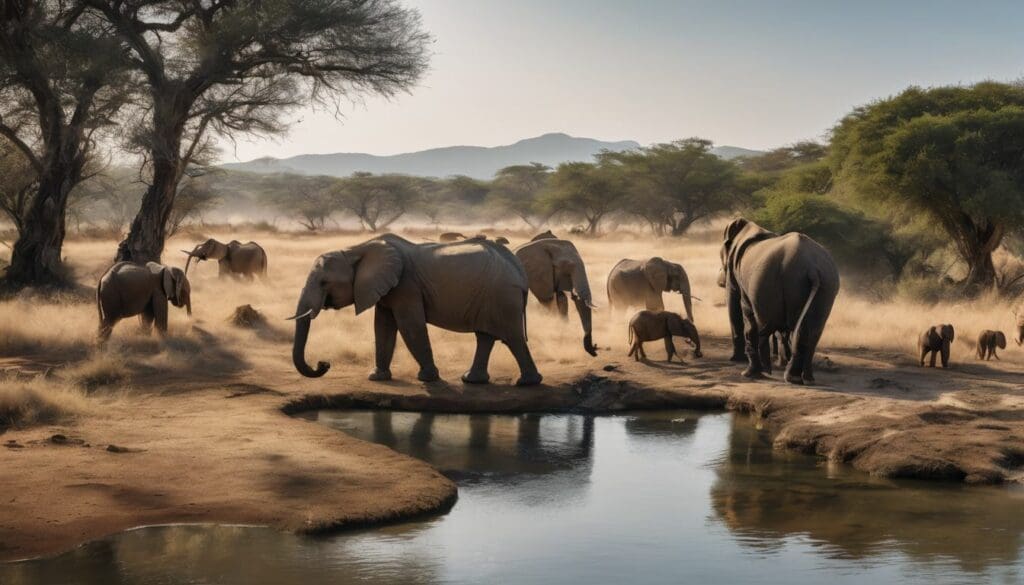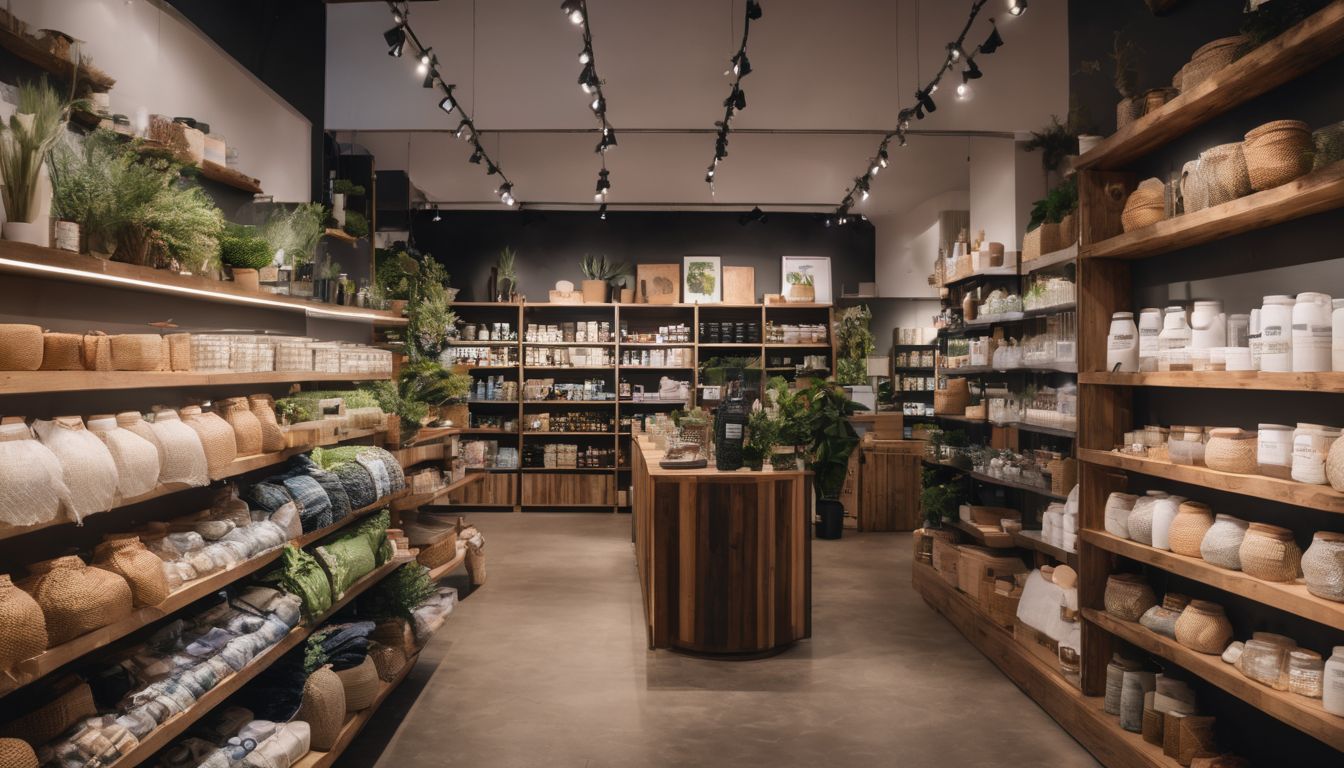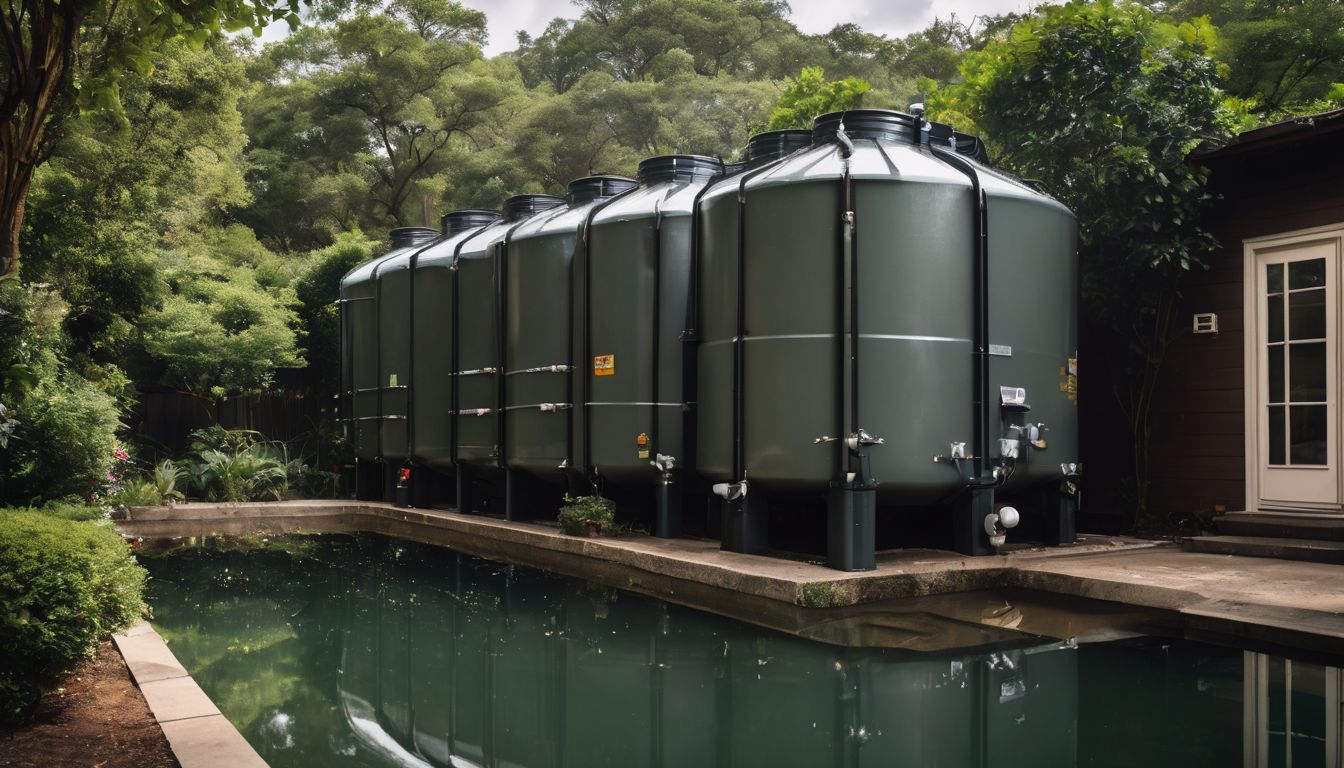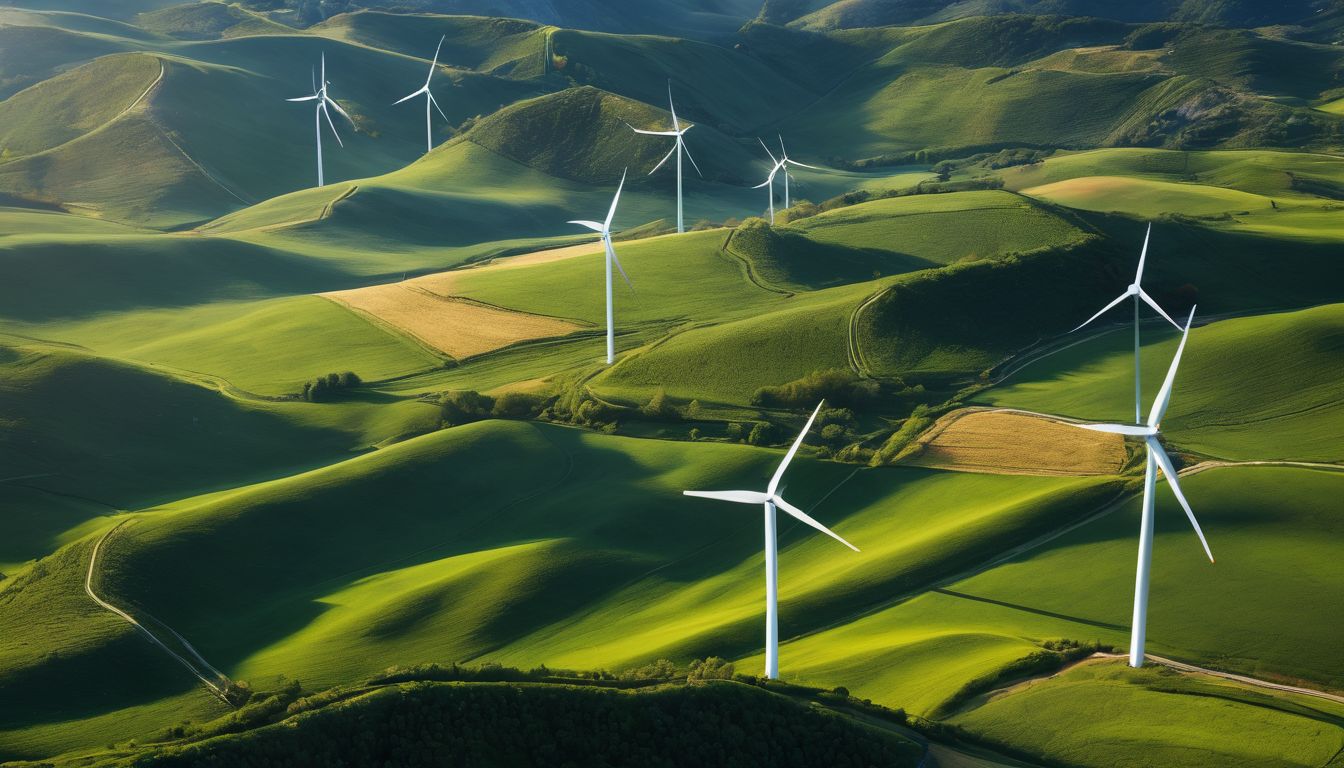Watching local wildlife struggle can leave many of us searching for ways to help. One in six UK species faces the risk of extinction, a fact that underscores the urgent need for action.
Our blog will guide you through creating a local conservation group to address this issue effectively and sustainably. Let’s make a difference together!
Key Takeaways
- Starting a local wildlife conservation group involves thorough research into regional ecological issues, finding an adult sponsor for guidance, and rallying community support through interest sessions and meetings.
- Building a conservation group not only aids environmental preservation efforts but also has the potential to achieve financial stability through fundraising and community-building activities.
- Volunteering or interning with established conservation organisations offers practical experience in wildlife protection while actively contributing to the health of local ecosystems.
The Importance of Conservation Groups
Conservation groups play a crucial role in safeguarding our planet’s precious biodiversity. They focus on protecting various species, restoring habitats, and educating communities about the value of wildlife preservation.
These organisations tirelessly campaign for sustainable development practices that balance human needs with environmental conservation.
Through ecosystem management efforts, such groups ensure the survival of numerous plants and animals by defending against threats like deforestation, pollution, and illegal hunting.
Local community engagement is vital to these movements as it fosters awareness and advocacy for vulnerable environments. By forming a local wildlife conservation group, individuals can directly contribute to meaningful actions that protect natural heritage for future generations.
How to Start a Local Conservation Group
To start a local conservation group, the first step is to do thorough research on the specific wildlife and environmental issues in your area. Once you have a good understanding of the local needs, find an adult sponsor to guide and support your group.
After securing a sponsor, hold an interest session to gather like-minded individuals who are passionate about wildlife preservation. Finally, schedule the first meeting to brainstorm ideas and establish goals for your conservation efforts.
Do your research
Research is crucial when starting a local wildlife conservation group. Start by gathering information about the specific needs of your area, such as endangered species, habitat destruction, or existing conservation efforts.
Investigate successful conservation groups in other areas to learn from their strategies and tactics. Understanding the legal requirements and regulations related to wildlife preservation is also essential.
Additionally, conducting surveys or interviews within your community can help gauge interest in forming a conservation group and identify potential supporters or volunteers. Remember that thorough research will provide a solid foundation for your local wildlife preservation initiative.
Find an adult sponsor
Seek an adult sponsor who is passionate about wildlife conservation and willing to support the initiative. Connect with local community leaders, environmental organisations, or businesses that share your vision for wildlife preservation.
Engaging with a knowledgeable and experienced adult can provide guidance, resources, and assistance in navigating any legal or logistical challenges that may arise when establishing your conservation group.
With the backing of an adult sponsor, you can gain credibility within the community and access valuable networks that can help propel your wildlife conservation efforts forward. Look for someone who is committed to making a positive impact on local biodiversity protection and habitat restoration.
Hold an interest session
Promote your vision and garner support by hosting an engaging interest session. Start by selecting a convenient location, such as a local community center or library. Spread the word through social media, flyers, and personal invitations to attract like-minded individuals who share your passion for wildlife conservation.
Prepare an informative presentation highlighting the goals of your group, its potential impact on local ecosystems, and how participants can get involved.
Encourage open discussion and collaboration during the session to inspire active participation from attendees. Provide a platform for them to share their ideas and aspirations for the conservation group.
Hold the first meeting
After generating interest and gathering potential members at the interest session, it’s time to hold the first meeting. At this crucial juncture, present your vision for the conservation group in a clear and compelling manner.
Encourage active participation by inviting members to share their ideas and goals for the wildlife preservation society. Create an inclusive atmosphere that fosters collaboration and enthusiasm among individuals with a shared passion for environmental protection.
Assign specific tasks or roles to interested volunteers to kickstart the group’s activities effectively.
During this initial meeting, establish ground rules, code of conduct, and communication channels to ensure smooth operation of the wildlife conservation organisation. Set achievable short-term targets that align with your long-term objectives as you embark on this vital journey towards making a tangible impact on local biodiversity.
The Benefits of Starting a Social Enterprise
Starting a social enterprise for wildlife conservation can have numerous benefits, including making a positive impact on the environment, potential financial stability, building a community around your cause, and the opportunity to learn from failure.
Making a positive impact
Participating in wildlife conservation efforts creates a positive impact on the environment and local communities. Supporting such initiatives helps protect endangered species, preserve natural habitats, and maintain biodiversity.
By joining or starting a conservation group, individuals can contribute to a sustainable future for wildlife and inspire others to take action.
Engaging with social enterprises focused on wildlife preservation enables individuals to make meaningful contributions while also fostering a sense of purpose. Such involvement not only promotes environmental stewardship but also cultivates a strong sense of responsibility towards the planet and its inhabitants.
Potential for financial stability
– Making a positive impact can lead to financial stability for your wildlife conservation group. By offering merchandise or services that align with your cause, you can generate revenue and create a sustainable source of income.
Leveraging social media, events, and partnerships can help raise funds and spread awareness, building financial stability over time.
– Building community support through local engagement and networking opportunities can also attract potential donors or investors interested in supporting your cause. Developing effective fundraising strategies and seeking grants from environmentally-focused organisations further enhances the potential for financial stability within your conservation group.
Building a community
When considering the potential for financial stability, building a community around your conservation group becomes essential. Collaborating with like-minded individuals creates a network of support that can amplify your impact and bring diverse skills to the table.
Engaging with local residents, schools, and businesses fosters a sense of shared responsibility towards wildlife preservation. By creating a strong community around your cause, you have the opportunity to inspire others to take an active role in protecting our environment.
Encouraging teamwork through group activities and events not only raises awareness but also instils a sense of unity in working towards a common goal. Building relationships within the community enhances your ability to garner resources such as volunteers, donations, and partnerships with other conservation organisations.
Possibility of failure and learning from it
Building a community of like-minded individuals dedicated to wildlife conservation can come with challenges. It’s crucial to acknowledge the possibility of failure and be prepared for setbacks along the way.
However, viewing failures as opportunities for learning and growth is essential in this journey. Embracing mistakes allows us to adapt, innovate, and ultimately improve our efforts in supporting wildlife preservation and environmental sustainability.
Understanding that setbacks are part of the process empowers us to approach obstacles with resilience and determination, enabling us to continue making positive contributions towards wildlife conservation initiatives.
Ways to Support Wildlife Conservation
Get involved in local efforts, support sustainable agriculture, advocate for wildlife protection, and volunteer with conservation organisations – these are just a few ways you can make a positive impact on wildlife conservation.
To learn more about how you can help preserve our planet’s diverse species, read the full blog post.
Mindful actions
Engage in mindful actions by reducing your environmental footprint. Choose sustainable products and packaging to minimise waste. Support local businesses that adhere to eco-friendly practices, promoting sustainability within your community.
Educate yourself and others about wildlife conservation, spreading awareness through social media or local events. Participate in clean-up activities in natural habitats, contributing to the preservation of our delicate ecosystems.
Conserve water and energy at home – turn off lights when not needed, fix leaky faucets, and reduce single-use plastic consumption. Advocate for responsible and ethical wildlife tourism practices while on holiday – choose reputable tour operators dedicated to protecting local wildlife populations and their natural habitat.
Financial support
Financial support is crucial for the success of wildlife conservation efforts. By donating to local conservation groups, you can directly contribute to the protection of endangered species and their habitats.
Your financial support helps fund vital research, educational programs, and on-the-ground conservation initiatives. Every pound you donate has a tangible impact on safeguarding our planet’s biodiversity for future generations.
Get involved in creating positive change by providing financial support to local wildlife conservation groups. Your contribution can make a real difference in protecting our natural world.
Advocacy
Advocacy plays a crucial role in wildlife conservation. By raising awareness, individuals can influence policies and practices that affect the environment and wildlife. Speaking up for conservation issues at local, national, or global levels can bring about positive change.
This may involve contacting government officials, participating in public demonstrations, or supporting campaigns that promote sustainable living and protection of natural habitats.
In addition to actively engaging in advocacy efforts, it is essential to educate others about the importance of wildlife preservation. Encouraging friends, family, and community members to join in conservation initiatives amplifies the impact.
Taking steps towards advocating for wildlife will further support the sustainability of our planet’s ecosystems.
Involvement in local efforts
To further support wildlife conservation, consider getting involved in local efforts. Engage with community initiatives and volunteer for clean-up activities or habitat restoration projects to directly contribute to the preservation of natural spaces.
Join local advocacy groups, attend meetings, and participate in events to promote awareness and rally support for environmental protection.
Contribute positively by supporting sustainable agriculture practices that reduce harm to wildlife habitats while promoting ecological balance. Additionally, seek out opportunities to intern or volunteer with established conservation organisations in your area to gain valuable experience and make a meaningful impact on wildlife preservation.
Supporting sustainable agriculture
Supporting sustainable agriculture is crucial for wildlife conservation. By purchasing products from local farmers who use environmentally friendly practices, you can help preserve natural habitats and protect biodiversity.
When consumers support sustainable agriculture, it encourages more farmers to adopt eco-friendly methods, ultimately benefiting both wildlife and the environment.
Engaging with local conservation efforts, such as supporting sustainable agriculture, helps build a stronger community committed to protecting our planet for future generations. This kind of involvement plays a significant role in ensuring a thriving ecosystem for all living creatures.
Volunteering or interning with conservation organisations
Get involved in wildlife conservation by volunteering or interning with local organisations. You can gain hands-on experience in marine conservation, animal welfare, and environmental protection.
This practical involvement will allow you to develop valuable skills while contributing to the preservation of wildlife and their habitats. By supporting these organisations, you play a direct role in promoting species protection and sustainable agriculture practices.
Engaging with conservation groups gives you the opportunity to make a real difference by actively participating in wildlife education, advocacy efforts, and community projects. Volunteering or interning supports the capacity for wildlife preservation while fostering personal growth through meaningful contributions to environmental causes.
Conclusion
Get involved in setting up a local wildlife conservation group today. Take action and make an impact on your community by starting a conservation initiative. Contribute to wildlife preservation efforts and create positive change in the environment.
Join forces with like-minded individuals to support and protect our natural world.
FAQs
1. What steps do I need to take to set up a local wildlife conservation group?
To establish a Local Wildlife Conservation Group, start by forming a team, registering as an environmental group or non-profit organisation, and creating goals for supporting wildlife conservation efforts.
2. Can setting up a conservation group be seen as business innovation?
Yes, launching a Non-profit Organisation for Wildlife Protection can be considered business innovation because it involves developing new ways to promote and support biodiversity in your community.
3. How can our group contribute effectively to wildlife conservation?
Your environmental group can contribute by initiating projects that develop conservation skills among members and encourage the wider community to invest time in promoting wildlife conservation capacity.
4. Is there any guidance available on creating a social enterprise for conservation?
Absolutely! There’s guidance on establishing guidelines for Creating a Social Enterprise for Conservation which includes how you’ll operate, raise funds, and work within legal frameworks to protect local ecosystems.
5. How important is collaboration when developing my own local wildlife conservation initiative?
Collaboration is key when Developing Conservation Skills and knowledge; engaging with other groups ensures diverse perspectives are included which strengthens the impact of Forming a Group for Wildlife Conservation.





